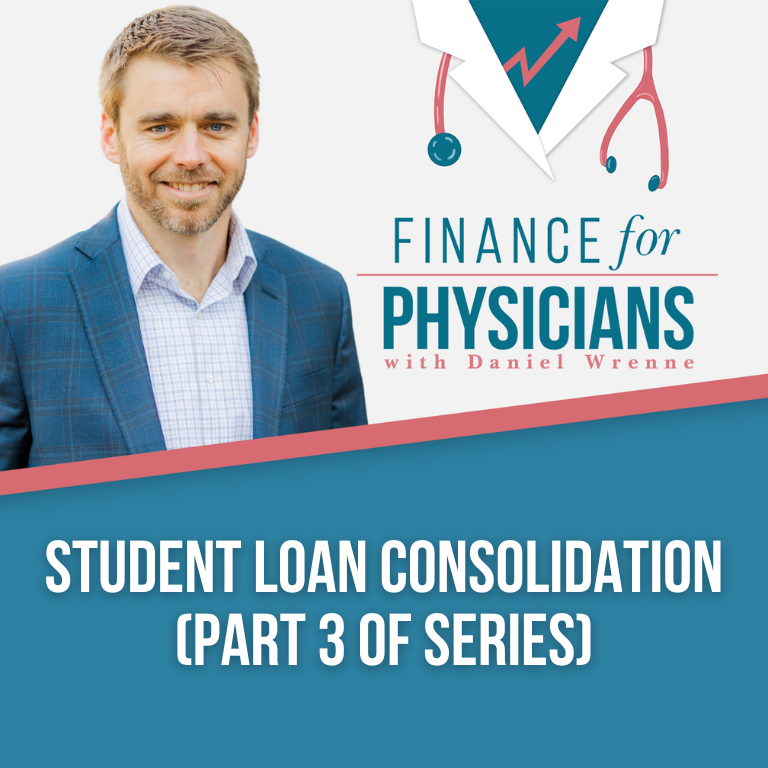This is the third article in our series covering student loans. Our goal in this series is to equip you with the knowledge necessary to make efficient and informed decisions regarding your student loans. In this post, we will dig into the pros and cons of consolidation. If you missed part one and two, go back and check those out first so we are on the same page.
What Is Student Loan Consolidation?
Consolidation allows you to combine all your existing qualified federal loans into one new federal loan. The current vehicle available for doing this is the direct consolidation loan. There are pros and cons that you must understand before moving forward with this type change. Use caution – once you consolidate, you cannot undo the transaction.
There are also options for consolidating your existing private and federal student loans into a new private loan, however, most of these lenders set your new rates and terms based on your financial situation – not based on the underlying loans. We will cover these options in more detail in our future post on student loan refinance.
Direct Consolidation Eligible Loans
The following is a partial list of federal student loans eligible for consolation:
- Direct Subsidized Loans
- Direct Unsubsidized Loans
- Subsidized Federal Stafford Loans
- Unsubsidized Federal Stafford Loans
- Direct PLUS Loans
- FFEL PLUS Loans
- Supplemental Loans For Students “SLS”
- Federal Perkins Loans
- Federal Nursing Loans
- Health Education Assistance Loans
- Some existing consolidation loans
Private student loans are not eligible.
How Do You Qualify?
You are eligible to consolidate once you complete, drop out or drop below half-time enrollment in school.
In order to qualify for direct consolidation, you must have at least one Direct or FFEL student loan that is in grace or repayment. For example, you would not be able to refinance a Perkins Loan by itself – it would have to be paired with an FFEL or Direct loan.
Direct Consolidation Student Loan Basics
The new direct consolidation loan interest rate is fixed for the life of the loan. It’s calculated by taking the weighted average of all the underlying loans and rounding up to the nearest one-eighth of 1%. This allows you to lock in pre-2006 variable rate loans at today’s low rates.
The direct consolidation loan offers multiple repayment options as follows:
You are not required to consolidate all of your loans. Often, it makes the most sense to only consolidate specific loans as long as at least one of them is a Direct or FFEL loan. You cannot consolidate an existing direct consolidation loan unless you include at least one additional eligible loan in the consolidation.
You are able to preserve your underlying subsidized loan benefits (except with Perkins Loans). If you do have eligible subsidized loans, you will actually end up with two direct consolidation loans – one for the subsidized and one for the unsubsidized.
Perkins Loan Consolidation
By consolidating your Perkins loans into a new Direct Consolidation Loan, you lose several important benefits:
- Loss of subsidized interest-free periods during school, grace or deferment
- Loss of Perkins loan cancellation programs (different than public service loan forgiveness)
- Loan Forgiveness and Direct Consolidation
By moving forward with a new direct consolidation loan, you reset your clock for qualifying for income based repayment and public service loan forgiveness – “PSLF”. Any payments made prior to a direct loan consolidation will not count toward satisfying these forgiveness requirements. This is very important to consider before consolidating.
Interest Capitalization
Direct loan consolidation will trigger interest to capitalize (or be added to the loan principal) on the underlying loans in certain situations. For example, by leaving certain income based programs, interest will automatically capitalize.
Once the loans are consolidated, interest that accrues and is not fully paid by your monthly payments will capitalize at the end of deferment or forbearance.
Summary Of Pros & Cons
Pros:
- No origination or prepayment fees
- Can change variable loan rates to fixed (pre-2006 loans)
- Simplify loans by centralizing
- Access to PSLF with FFEL & Perkins loans
- Access to PAYE for certain loans without PAYE option
- Offers more payment flexibility in some cases
Cons:
- Resets PSLF and income based repayment forgiveness clock
- May trigger underlying loans to capitalize
- It’s never a lower interest rate and in some cases may be higher
- Lose special benefits associated with any Perkins loans
Again, be cautious about moving forward with direct loan consolidation – particularly if you have more recent fixed rate loans that already offer many of the perks that come with the direct consolidation loan. There are cases where it’s an obvious benefit, but others where it actually hurts you.
Check out our other posts in the series below:
Don’t forget to check out our other posts in the series below:
Part 1: Student Loans & Your Situation
Part 2: Student Loan Interest
Part 3: Student Loan Consolidation
Part 4: Student Loan Repayment Plans
Part 5: Student Loan Forgiveness
Part 6: Qualifying for Public Service Loan Forgiveness
Part 7: Student Loan Refinance
Part 8: Student Loan Refinance Reviews
Part 9: Student Loan Tax Considerations
Part 10: Student Loan Resources
